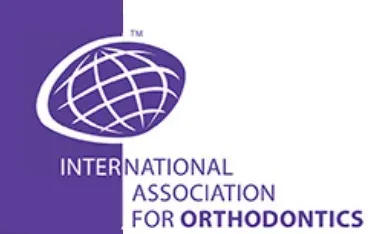September’s Tip

Why do we have so many different types of brackets, is this not confusing? Part III
By Dr. Adrian J. Palencar, MUDr, MAGD, IBO, FADI, FPFA, FICD
September 2020
Orthodontic brackets

Orthodontic brackets are an integral part of Straight Wire Appliance – SWA (or any other system), and they act as handles which hold the arch wire that moves teeth. The most critical part of SWA treatment is bracket placement, which influences the finished outcome positively or negatively. Orthodontic brackets are fabricated for an average tooth and they should be in majority of cases bonded at the center of the long axis of clinical crown.
If the bracket is bonded too occlusally, it creates slight intrusion and labial moment (labial torque). Corollary, if the bracket is bonded too gingivally, it creates slight extrusion and lingual moment (lingual torque). Similarly, if the bracket is bonded too distally, it creates a mesio-lingual moment and if it bonded too mesially, it creates disto-lingual moment. If the bracket is not bonded precisely on the long axis of the clinical crown, it may create undesirable tipping of the tooth.
There are many genres of orthodontic brackets on the market: metal, single wing, double wing, self-ligating, tooth colour and hybrid, just to name few.

Non self-ligating metal orthodontic brackets – single wing brackets. Advantages: they are inconspicuous, the applied force is less, because of larger inter-bracket distance and they are pleasing esthetically. Disadvantage: it is more difficult to correct rotations, as one must use rotational wedge occasionally. They are also available Nickel free. Example: Attract (Ormco), Delta Force (Cerum Ortho Organizers).

Non self-ligating metal orthodontic brackets – double wing (twin or Siamese) brackets are “bread and butter” of orthodontics. Advantages: they are wide with excellent control of rotations and they make good use of two tie wings. Disadvantages are; they are less pleasing esthetically, and the applied force expression is greater, due to the smaller inter-bracket distance compared to the single wing brackets. They are also available Nickel free. Some companies manufacture these twin brackets with a vertical slot (.018 x .018), which accepts up-righting, torqueing and rotational springs. Examples: Elite Mini Twin, Maestro (Cerum Ortho Organizers), Horizon, Micro Twin (Ortho Arch)

Self-ligating metal orthodontic brackets – passive also referred to as “low force low friction” brackets, have a passive clip for engaging and retaining the arch wire. For all intents and purposes these brackets behave (after the clip is closed) as small molar tubes. Advantages: the ease and speed of changing the arch wire, and they are very esthetic and clean. They are expedient leveling in small diameter wires, because of minimal friction and binding. Disadvantages: the price, and the final tip and torque can be expressed only with very large diameter wires (.019 x .025, .020 x .025), because of the passivity of the clip. If the clip falls off, there is no need to replace the bracket, as it will function as a single wing non self-ligating bracket. Examples: Damon (Ormco), SLX and SLX3D (Cerum Ortho Organizers), Nustar Gen2 (Ortho Arch).

Self-ligating metal orthodontic brackets – passive/active, they are fabricated with active clip for engaging and retaining the arch wire. The function is similar to passive self-ligating metal orthodontic brackets, except the final tip and torque can be expressed with smaller diameter arch wires. These brackets are passive in small diameter arch wires (.014, .016) and active in larger diameter arch wires. The reason is, that the clip is flexible. It is made of SS or Nickel titanium and it is literally forcing the arch wire into the slot. Examples: Speed System (STRITE Industries Ltd.), In Ovation – R (Dentsply GAC),

Self-ligating hybrid (ceramic/metal) orthodontic brackets – passive/active. The body of the bracket is fabricated from ceramic and the clip is metal. They function in a similar way as the metal one, however, they are more esthetic. Example: In Ovation C (Dentsply GAC), Clear Lock (Ortho Arch).
Tooth coloured brackets are fabricated as single wing, double wing, self-ligating and self-ligating hybrid. They may be made of ceramic, glass or composite. Advantages: esthetics and demand, particularly by female patients. Disadvantages: the price, the tie wings and power hooks have a proclivity to break off, they stain easily, and they are difficult to place and difficult to remove. There is more friction between the slot and the arch wire in ceramic/composite brackets than in metal brackets. Therefore, some companies place a metal insert to the bracket slot. Examples: Neo Crystal, Neo Lucent, Illusion Plus, Illusion Plus Silver Slot (Cerum Ortho Organizers), Nova C, Nova S (Ortho Arch).

References
English J. D., Orthodontic Review; 86 – 91
Graber T. M., Orthodontics Current Principles & Techniques; 595 – 597
Rondeau Seminars, Introduction to Orthodontics Level I, Session 2; 21 – 34
